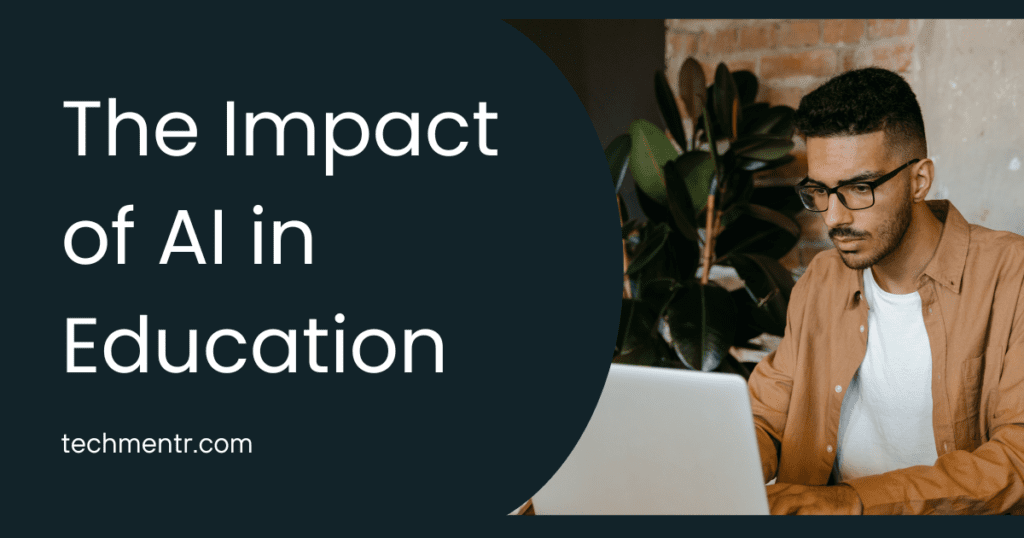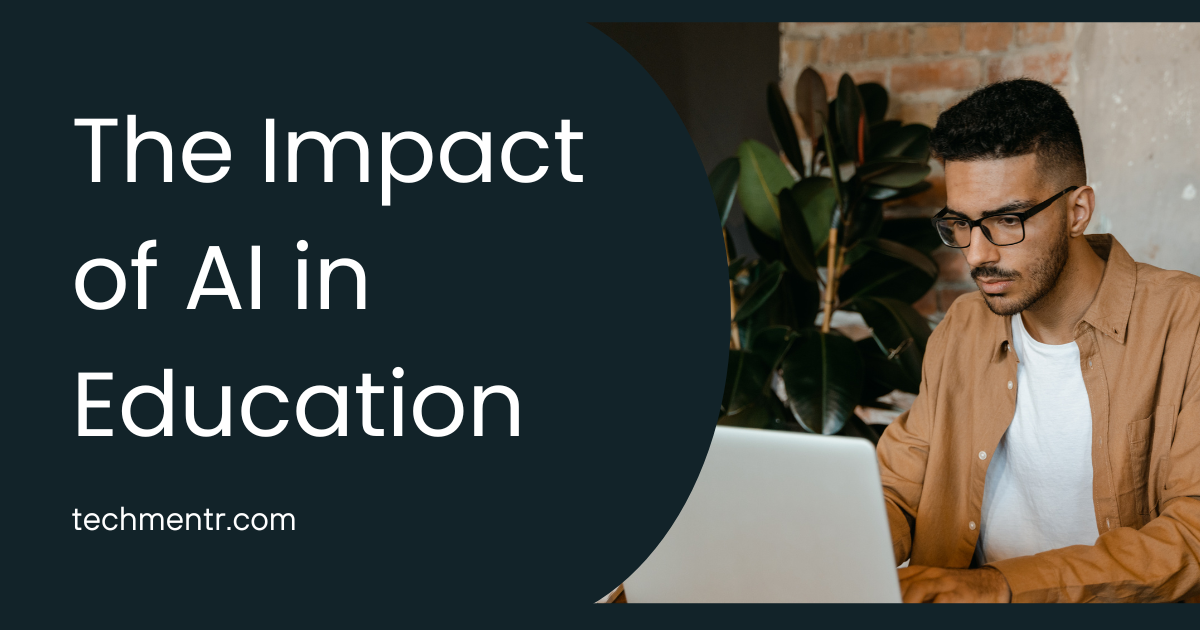In today’s fast-paced world, technology touches every part of our lives, and education is no exception. AI in education is making significant waves, changing the way teachers teach and students learn. From personalized learning experiences to automated grading, AI in education has the potential to transform traditional classrooms into spaces where each student can thrive. But what exactly does AI bring to education? What are the pros and cons of AI in education? While AI can be incredibly powerful, it’s essential to understand both the benefits and challenges it brings to the table. For students, parents, and educators, navigating this new landscape means considering both the rewards and potential downsides.

How AI is Changing Education
Artificial Intelligence in education goes beyond simply adding gadgets to the classroom; it’s about transforming learning processes. Here are some key ways AI is currently impacting education:
- Personalized Learning: AI can analyze students’ strengths, weaknesses, and learning paces to provide a customized experience.
- Homework Help AI Tools: Students struggling with assignments can use AI-powered homework help apps, which guide them step-by-step through problems.
- AI Teachers and Tutors: While AI can’t replace teachers, AI-driven tutoring tools can supplement traditional learning, making it easier for students to review subjects outside the classroom.
- Efficient Grading Systems: AI-powered grading tools help teachers manage time by quickly grading exams and homework, especially with multiple-choice assessments.
- Enhanced Accessibility: AI-powered tools, like speech-to-text, assist students with disabilities in accessing the same education as their peers.
Pros and Cons of AI in Education
When considering the impact of AI in education, it’s essential to examine both its advantages and disadvantages:
Pros of AI in Education
Personalized Learning: AI can offer students learning material tailored to their unique needs. This means students who need extra help can get it without disrupting the entire class.
Time-Saving for Teachers: Tasks like grading can take hours. AI grading systems speed up this process, allowing teachers to focus more on instruction.
24/7 Support: AI tutoring systems provide help outside of school hours, so students can get assistance whenever they need it.
Improved Engagement: Interactive AI-driven tools can make learning more engaging, keeping students interested in their studies.
Increased Accessibility: AI tools are incredibly useful for students with learning disabilities, offering a level of personalized support that wasn’t possible before.
Cons of AI in Education
Dependence on Technology: Increased reliance on AI may reduce students’ problem-solving skills if they rely too heavily on it.
Data Privacy Concerns: AI systems collect large amounts of student data, raising questions about privacy and security.
Lack of Human Touch: AI tutoring systems, while helpful, can lack the emotional connection that human teachers provide.
Cost: Implementing AI technology in schools can be expensive, which might make it inaccessible to underfunded schools.
Balancing these pros and cons of AI in education is crucial for creating a system that leverages AI’s strengths without overlooking its potential risks.
Can AI Replace Teachers?
It’s a common question: will AI replace teachers? The answer is, quite simply, no. While AI teachers can help students with particular tasks, they cannot replace the empathy, motivation, and mentorship that human teachers provide. AI can, however, work alongside teachers, offering extra support where needed.
In this partnership, teachers can focus more on fostering critical thinking, creativity, and communication skills—areas where AI still falls short. The role of AI in education isn’t to replace teachers but to enhance the educational experience by handling routine tasks and providing additional resources.
Homework Help AI: A Tool for Success or a Crutch?
Another major innovation is homework help AI tools, which students can use to get support with challenging assignments. These tools can be incredibly helpful for students who need a little extra guidance, but there’s a downside if they become overly dependent on these tools.
So, is homework help AI a tool for success or a crutch? It all depends on how it’s used. When students use AI to understand concepts and work through problems, it can be a valuable resource. However, if students rely too heavily on these tools, they might miss out on learning critical problem-solving skills.
Future of AI in Education
Looking forward, AI in education is likely to continue evolving. Imagine classrooms where every student has a personalized AI tutor or where AI analyzes a student’s learning style and suggests resources accordingly. AI could also help identify learning disabilities earlier, giving students the support they need to succeed.
Despite these advancements, it’s essential to remember that AI is just one part of a well-rounded education system. Teachers, parents, and students must work together to use AI responsibly, keeping its strengths in mind without neglecting the importance of human interaction.
Read Also:
Is it Possible to Learn English in Duolingo?
Are Educational Apps Good for Kids?
FAQs on AI in Education
How is AI used in education?
AI is used in education for personalized learning, grading automation, providing homework help AI tools, offering AI tutors, and supporting students with disabilities. It makes education more accessible and efficient, allowing teachers to focus more on instruction and less on repetitive tasks.
What are the pros and cons of AI in education?
The pros of AI in education include personalized learning, time-saving grading, 24/7 student support, and increased accessibility. However, the cons of AI in education involve privacy concerns, dependency on technology, high implementation costs, and lack of human connection in AI tutoring.
Can AI replace teachers?
No, AI cannot replace teachers. While AI can assist with certain tasks and provide personalized tutoring, it lacks the empathy, motivation, and guidance that human teachers offer.
What is AI teacher technology?
AI teacher technology refers to tools and applications that assist teachers by grading assignments, providing instructional support, and helping students learn at their own pace. It’s not a replacement for teachers but a resource to enhance the educational experience.
Are homework help AI tools beneficial?
Yes, homework help AI tools can be beneficial if used responsibly. They can guide students through challenging concepts, but over-reliance may prevent students from developing essential problem-solving skills.
Conclusion: Embracing AI in Education with Caution
AI in education has the potential to make learning more engaging, accessible, and effective. From homework help AI tools to AI teachers, the possibilities are vast. Yet, as with any powerful technology, the key lies in how we use it. For the best outcomes, we need a balanced approach that combines the advantages of AI with the irreplaceable human touch teachers provide.
Education is ultimately about growth and connection, and AI should be seen as a tool to enhance, not replace, these experiences. By understanding the pros and cons of AI in education and using it wisely, we can create a future where every student has the opportunity to succeed.

